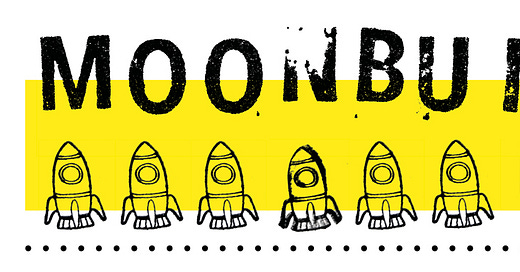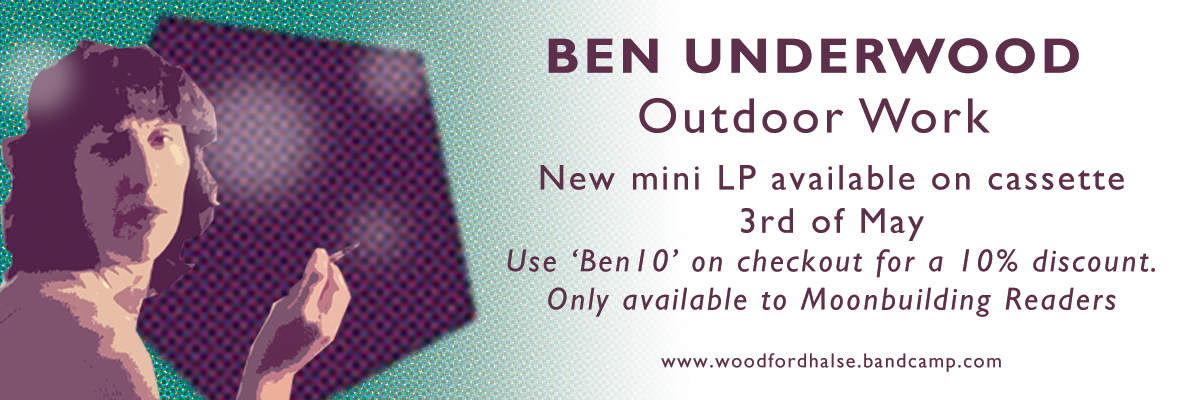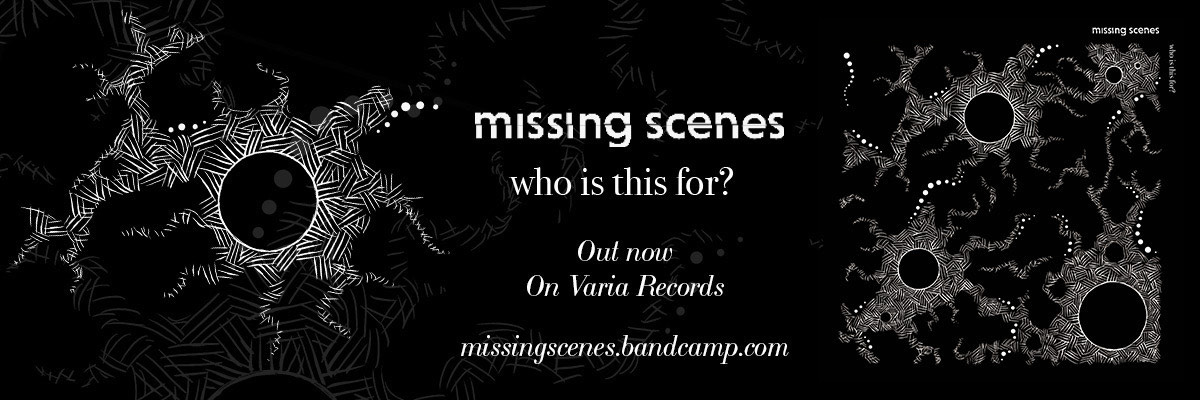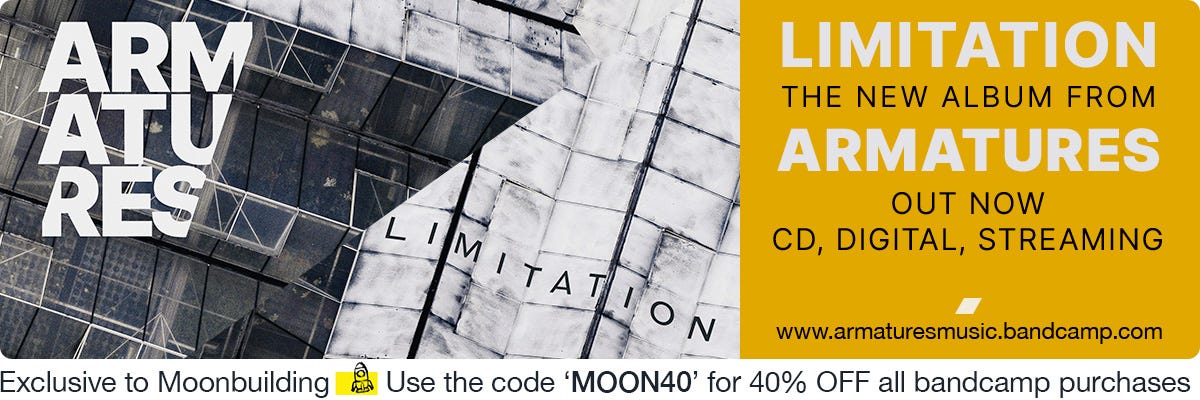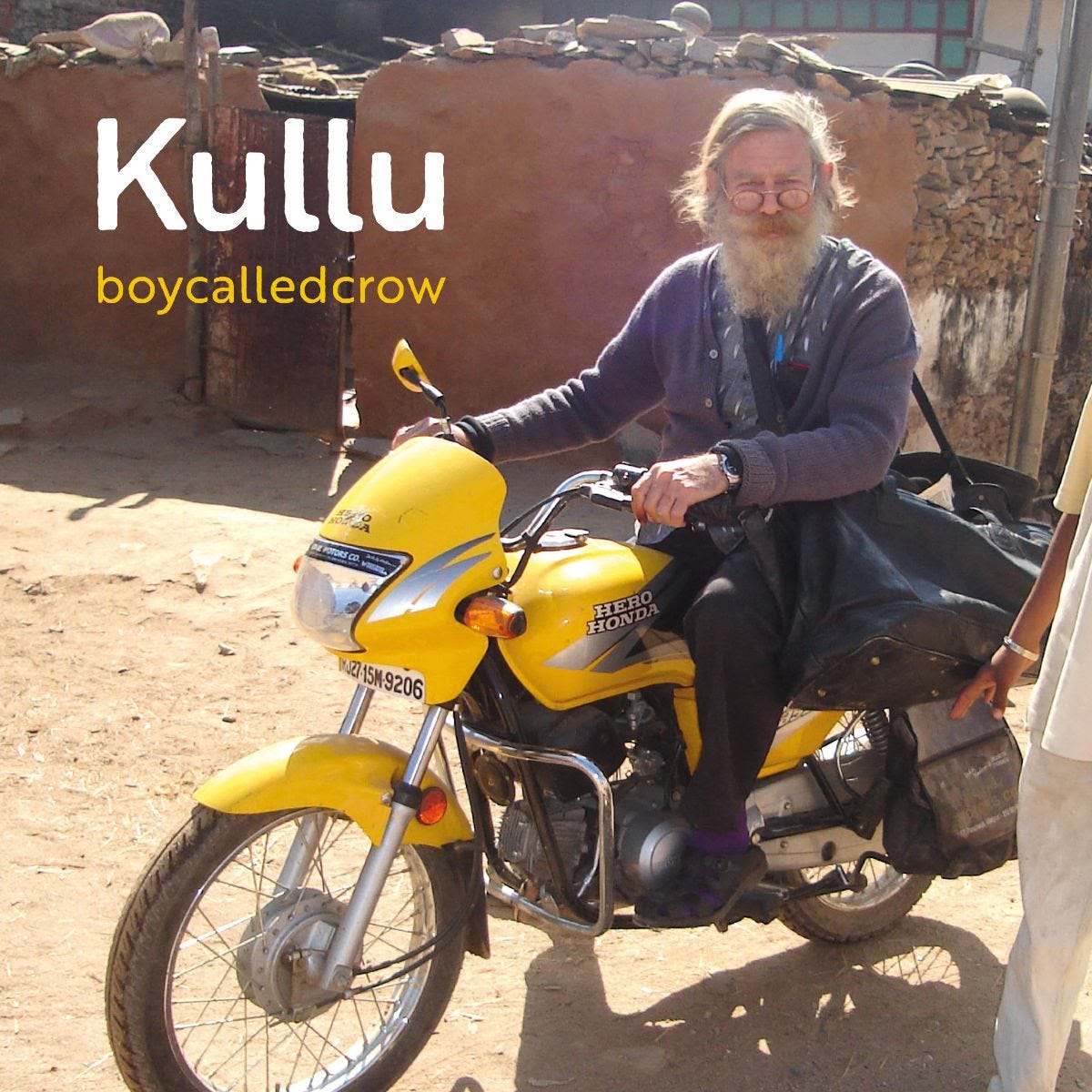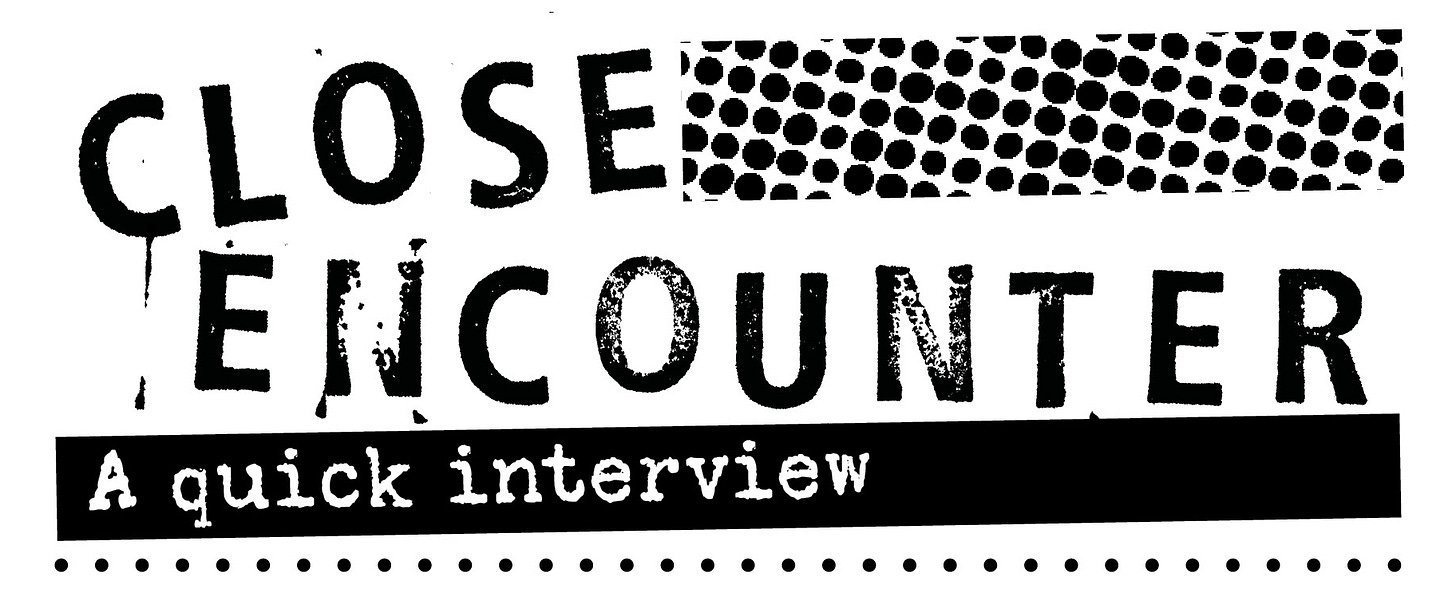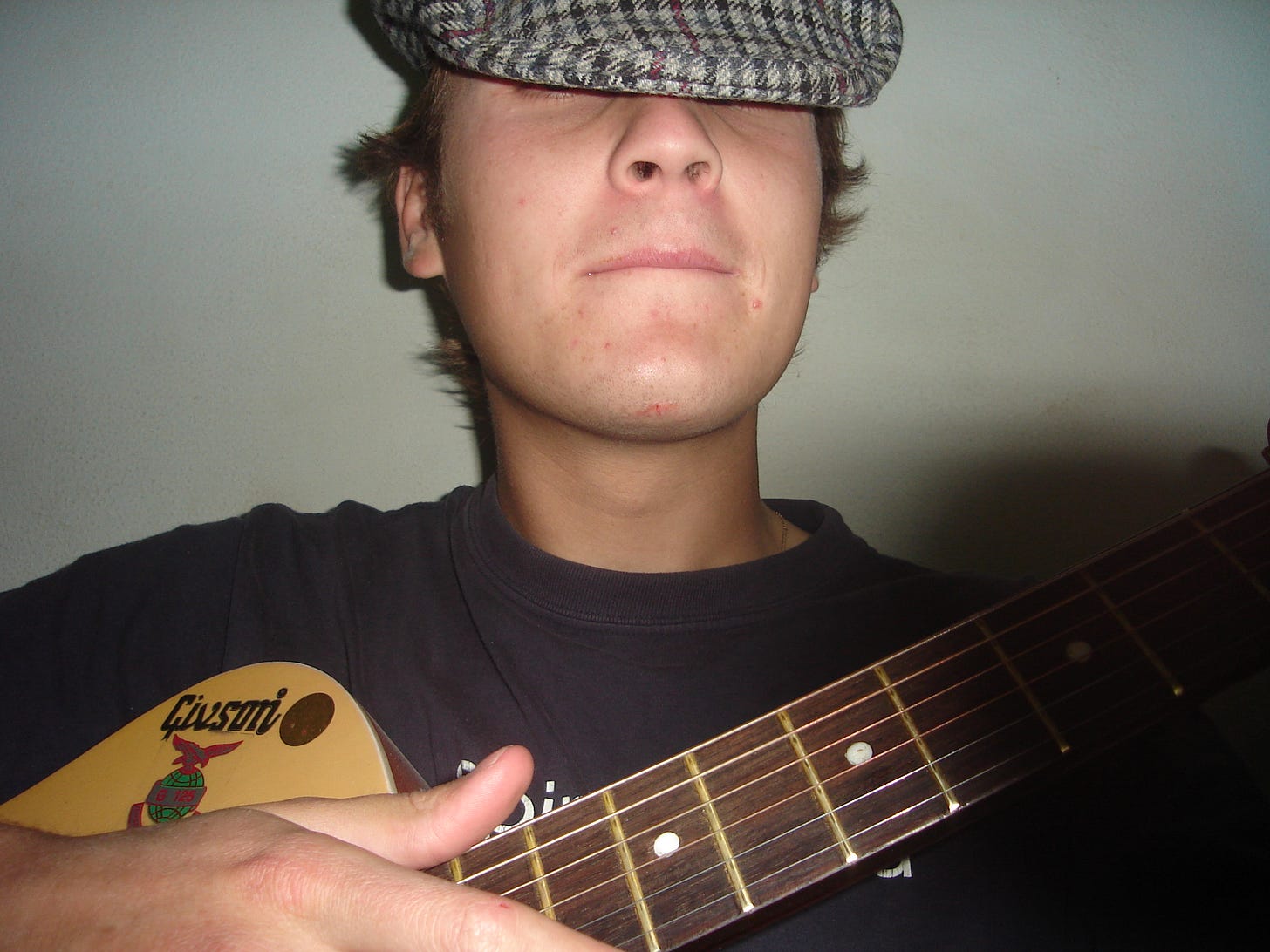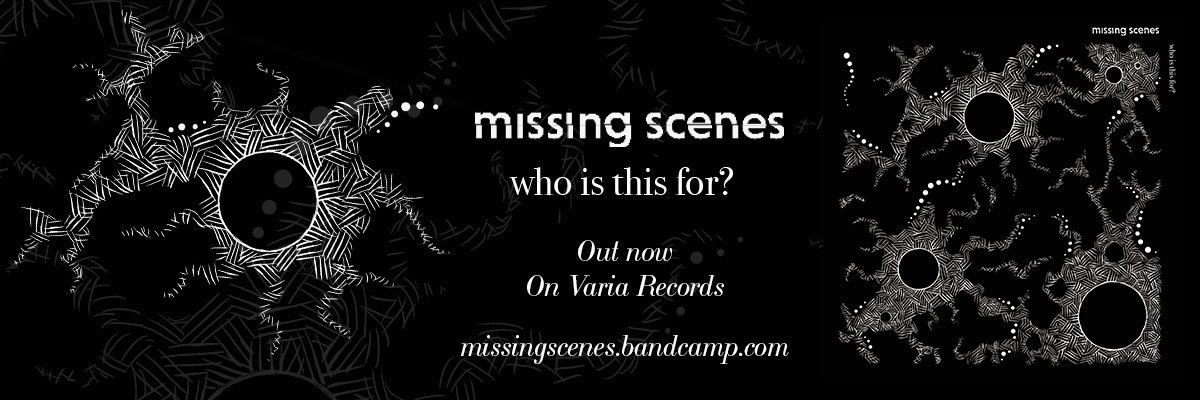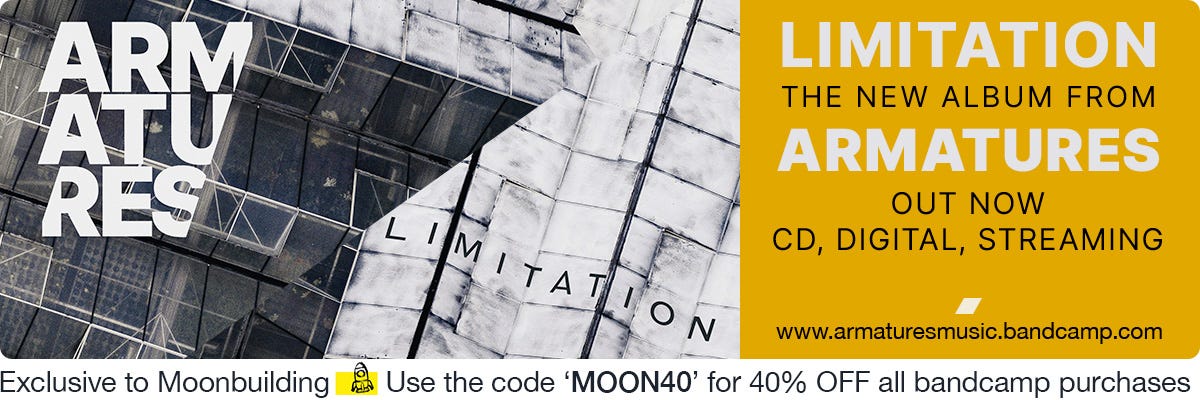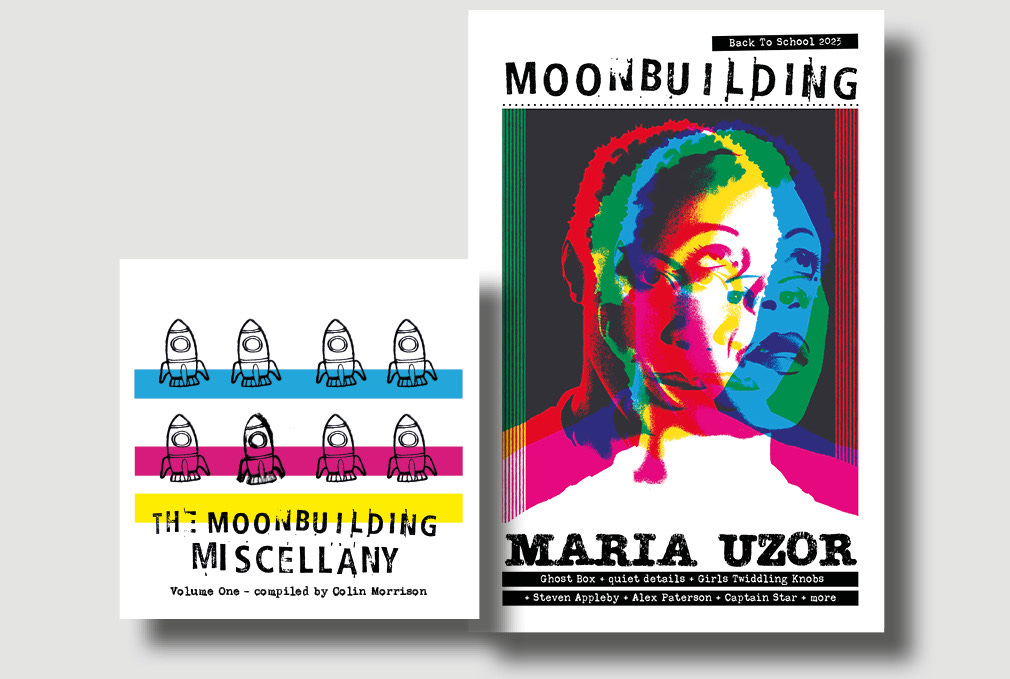Issue 16a / 3 May 2024
In part one of this week's serving of DIY electronic goodness... Album Of The Week: boycalledcrow's 'Kullu' + Carl M Knott interview
Happy May everyone. June next, which is actual summer. Not that you’d know from the weather outside. Absolutely bucketing it down here. As it’s the first Friday of May it is, of course, Bandcamp Friday. While the site waiving its fee one day a month is a brilliant initiative, putting more money into the pockets of artists and labels, the volume of releases is insane.
So in the interests of actually sleeping, I’m just going to breeze on through picking out the week’s finest new releases like I always do. Don’t think I’m ignoring the big day, I’d encourage you to lend your support, but as for covering more? Not enough hours in the day I’m afraid.
And talking of support, can I remind you that all this you see around you is currently free. If you’d like to help us keep it that way there is a “Buy us a pint” link below for donations or you can advertise your wares with us. Very reasonable rates. Spaces filling up fast.
We’re continuing our Friday two-part newsletter experiment. People seem to like it, especially the afternoon drop, which features all the new releases. See you all back here at 3.30pm. Righto, let’s get on with it shall we?
Neil Mason, editor
moonbuildingmag@gmail.com
Issue 16 Playlist: See this afternoon’s mailout
Buy us a pint: ko-fi.com/moonbuilding
***ADVERTISE HERE***
For details, email moonbuildingmag@gmail.com
BOYCALLEDCROW ‘Kullu’ (Mortality Tables)
Life can be tough. At some point or other many of us will have had a scrape with depression or anxiety. Whether the problem is major or minor, we all need to find our own way of coping. For some that’s medication, for others therapy. Some go for the big guns and make a total lifestyle change.
boycalledcrow’s Carl M Knott struggled with mental health throughout his teens and into his 20s. After such a prolonged period he decided to make good his escape through travel, an experience he describes as “transformative”. Growing up in multi-cultural Stoke-On-Trent filled his head with dreams of far-off places and a high school teacher’s tales of her own travels had stayed with him. When he graduated in 2005, Carl knew the time was right, and into the bargain, nearly 20 years down the line, ‘Kullu’ is a travelogue of his adventures as he roamed across India for six months.
But this is no looking backing and remembering his younger self’s exploits from several decades distance, the source material comes from in the field on that original journey. He took with him an old digital camera that he filled with videos and photos and wrote up his experiences from various cafes in the evenings, publishing it all on his TravelBlog page as he went.
While he headed east, which people tend to do when finding themselves is on the cards, Carl was determined not to be drawn into the well-worn tourist traps and so it turned out as he spent his time in the beautiful Kullu Valley, after which the album is named.
You can also forget any ideas that the album is going to be some mystical, spiritual release full of tablas, tanpuras and chanting. Which isn’t to say they aren’t there. If you’ve been following Carl’s work, as a boycalledcrow, Spacelab or his collaborative Wonderful Beasts project with Xqui, you’ll know he doesn’t exactly do pop songs. But the former folk artist knows how to create captivating compositions. I’ve talked before about his dense, layered work and how you need to tune in, but once you do there is a richness in his sound and his output that just keeps on giving.
To create ‘Kullu’, Carl adds recordings of his own playing from the time, on a guitar bought in Dehradun for £27, to the field recordings and uses Aphex Twin’s Samplebrain app to process a good deal of the sound here. The sample mashing app allows you to interpret sounds with different sounds and has a myriad of tweakable parameters, which Richard James himself admits can get “slightly out of control”.
With all that information seeping in one thing is for sure, ‘Kullu’ is going to be a trip. Which is what Carl went on in the first place so seems apt.
From the moment the album opens you can hear the influence of India. Or at least you think you can. ‘Charas’ starts with the beat of tablas that give way to a rhythmic drone, which in turn dissolves into electronic thrums and squiggles before the drone reemerges.
I love ‘Tuktuk’ with its repeating melodic motif, like the put-put of one of these crazy scooters. ‘Pretty In The Sun’ shimmers in the breeze. You can almost feel it swaying gentle, backwards and forward. And then a tune begins to emerge, a guitar picking –almost stuttering – its way out of the mix. It’s a track that bubbles and froths, its melodic squall ebbing and flowing.
There is a lot of guitar here, all played on that £27 six-string. On tracks like ‘Joy’ it’s a twangy, plucky romp that settles into, almost, a groove. On closer ‘Kali’ it comes on like Fripp or Penguin Cafe Orchestra – it has that kind of rich buzz of ‘Music For A Found Harmonium’, which is going some. A guitar that sounds like a harmonium. Here Carl’s squibs of sound layer with guitar picking that slowly but surely build to an intense, frantic rhythm. It’s quite the showstopper to close the record with.
As the accompanying notes point out, ‘Kullu’ is the sound of an artist “acutely listening to the turning of the world around him”. The really interesting thing is how he can look back through recordings he made nearly two decades ago and interpret them as how he sees that time now. The ingenuity and creativity on show here fair makes the head spin. With each boycalledcrow release Carl seems to grow in confidence and in quality. Can’t wait to hear what’s next. [NM]
‘Kullu’ is out now on Mortality Tables
CARL M KNOTT
boycalledcrow talks us through the transformative six-month trip he took to India nearly 20 years ago and breaks down the whys and wherefores of making ‘Kullu’, a long-playing audio travelogue of his adventure
Interview: Neil Mason
Hello Carl how’s things? What are you up to today?
”Everything’s cool. I’ve got two young kids and also doing a house renovation, so life is super busy, but all good.”
This new album is an audio travelogue of your adventures in India in 2005/06. I guess the question is why an album now?
”When I was traveling, I had an old digital camera so I took lots of videos and photos. I also carried several notebooks and would write about my experiences in the evenings. I thought I’d lost all my photos and videos in a hard drive crash about 10 years ago, but fortunately, last year, I found them on an old CD-ROM. It was one of three, and as I looked at the photos and watched the videos, I reminisced about the journey. The videos, though rough, have some great content, including nice sounds, incidental music, and some guitar pieces I recorded while learning to play. It all made me feel like I could make a story out of it.”
Let’s rewind a bit and set the scene. What prompted your trip to India?
”I grew up in Stoke-on-Trent, where we have an amazing Indian community. I’ve always been interested in experiencing different cultures, you know, to see something different from my own upbringing. I also had a fantastic teacher, an RE teacher called Mrs Veater, who inspired me when I was in high school. She shared stories about her travels, which planted a seed in my mind. I started saving up, and then, in my 20s, after university, it was time to do it.”
Travelling, especially heading east, is often about more than great beaches and fantastic scenery. For you there was a mental health aspect wasn’t there?
”From the age of 15 to my mid-20s, I battled with mental health issues. This had a very negative impact on my life, making it difficult to form relationships with people. I lost myself in music, art and daydreaming as a way to escape my situation. I felt compelled to confront my challenges head-on, and travelling to somewhere like India was transformative. I had to look after myself, which turned out to be beneficial, and it forced me to meet people, experience new things, and ultimately, it helped me do something really positive.”
You travelled on your own?
”Yeah, after I graduated I spent the summer planning my trip, detailing every place I was going to visit and how long I’d stay at each. I was set for six months. It’s funny, as soon as we landed in New Delhi, the chaos was real. The journey to Paharganj, where I was staying, was crazy with lots of tuk-tuks, taxis, coaches, cows, monkeys, and people all moving in different directions on the same road. The first thing that hit me was the overwhelming noise, the pollution, and sensory overload from the crowded streets and incessant traffic.”
That sounds intense, not exactly what you were looking for, eh?
”I’m quite introverted and in Paharganj I got hassled constantly. I remember walking the streets, and vendors would pull me into their shops, trying to sell me these handmade cotton trousers that looked like pyjamas and one-way tickets to Kashmir. I ended up buying the trousers, promising to return in the next few days, but I didn’t as I had to escape to the mountains and the holy city of Haridwar. The detailed plan I’d laid out was scrapped as I began my real adventure, traveling from city to city, by bus or train, just me, meeting new people.”
What did you expect to get out of the trip?
”I just wanted to get out of Stoke-on-Trent and experience something completely different on my own, a total change from my day-to-day life. Just being on the road, taking each day as it comes, living in the moment, not really knowing what each day will bring.”
You also documented the trip via a blog while you were travelling. Why was that important? Is the blog still online?
”I was reading a lot of Jack Kerouac, so I found myself in a sort of ‘On The Road’ headspace. I just felt this urge to document everything. This was before smartphones, and the evenings felt particularly long so I spent that time writing and playing guitar. The blog I started during that time is still online, albeit incomplete. It’s still accessible under the name Curious Yellow, which was inspired by a hallucinogenic feather in Jeff Noon’s novel, ‘Vurt’.”
Here we are nearly 20 years later and you’re using that work as source material for a new album, ‘Kullu’, that’s a wait isn’t it?
”Revisiting old material isn’t new to me. I used to be part of a group with a friend. We were bedroom music makers, jamming out lots of music that never saw the light of day in terms of release or live performance. However, I stumbled upon those sessions on an old hard drive four or five years ago and made the Spacelab ‘Kaleidomission’ album from them. It’s heavily processed, but manages to capture the eerie atmosphere of the time. My ‘Mystic Scally’ album follows a similar vein. I enjoy the process of creating something new from something old. I thrive on destruction and creation, constantly breaking down and reassembling to breathe new life into my compositions. This iterative approach defines how I compose music. My mantra is to destroy, create, then repeat. It’s really liberating and I love working this way.”
Can you describe what the album actually is?
”It’s an inner-head sonic exploration, transmitting electroacoustic wonky guitar drones amid the backdrop of tuk-tuks travelling at breakneck speed through broken alleys, permeated by the smell of Charas, incense, and shit. This leads to a profound Vipassana experience, breaking and unraveling the psyche.”
The album cover is an intriguing image…
”The artwork features a photograph of my friend James, who moved to India in the 60s. He’s a local artist and furniture maker. I met him in Udaipur, Rajasthan. He’s an amazing guy, truly inspiring. He used to buy charas from the local sadhu, who was a real character.”
Vibrant towns, tabla rhythms, chanting and tanpura drones... talk me through some of the sounds you use from the trip – any favourites?
”One of my favourite sounds is a recording I made of a group of farmers in the Thar desert. We were camping and sitting around the fire when we met them. I’ve incorporated it into the track ‘Sadhu’, and we also used some of the footage in the video for ‘Milk And Honey’. It was truly a magical moment, and the video turned out wonderfully.”
And tell me a little about how you’ve processed these sounds for this release? And why you’ve done that?
”Like I said, my mantra is to destroy, create, then repeat. It’s really liberating, and I love working this way. I play acoustic fingerpicking guitar, so I try to play my controller the same way. At the same time, audio is very visual for me. I get a glimpse of an abstract object in my mind’s eye and try to get close to that, but I also like the feeling of falling into a rabbit hole and not knowing where I might end up. I’ve used Aphex Twin’s samplebrain app extensively on this record, resulting in some really gnarly sessions. Alongside the India sounds, I’ve also used old guitar recordings from 2006-07 when I was at University in Limerick, which were all made using the guitar bought in Dehradun for £27. You may also hear my Minibrute and a few wonky rhythms.”
The £27 guitar features heavily here. Is it still in use?
”Sadly the guitar was damaged when we moved so I ended up repurposing it as a plant pot, ha-ha.”
Have you found making the album has thrown up some good memories?
”I enjoyed living out of a backpack, meeting new and interesting people every day from different backgrounds and embracing a no-frills, non-materialistic lifestyle. Not sure if I could do it now, but I cherish that memory and sense of freedom. I miss the hustle and bustle, the vibrant colors, the lively sounds, the various languages, the bustling streets with chanting, tuk-tuks racing and, as crazy as it may sound, the pollution, that big, thick layer of smoke in the morning.”
Proceeds are going to a mental health charity called CHUMS, tell me a little about them?
”CHUMS was suggested to me after a friend’s daughter had been referred to the charity following a spell of anxiety and depression. CHUMS provides support to young people and their families suffering with mental health challenges. What my friend’s daughter was going through reminded me a lot of my own struggles as a teenager, and because of that, supporting CHUMS seemed to make sense in the context of this album.”
For more Boycalledcrow, visit boycalledcrow.bandcamp.com
***ADVERTISE WITH US***
For details, email moonbuildingmag@gmail.com
A MESSAGE FROM THE MOTHERSHIP
SPRING SALE…WHILE STOCKS LAST…SPRING SALE…WHILE STOCKS LAST…
MOONBUILDING ISSUE 4, WAS £10 NOW £5 (+P&P). GRAB YOURS WHILE STOCKS LAST … MOONBUILDING.BANDCAMP.COM
The current issue of MOONBUILDING is full to the gills with the good stuff. On the cover, star-in-the-making Maria Uzor, we profile label-of-the-moment quiet details, there’s an incredible interview with Captain Star creator Steven Appleby, and Ghost Box’s Jim Jupp gets busy with our There’s A First Time For Everything questions.
We review a big pile of releases from labels including Castles In Space, Woodford Halse, Persistence Of Sound, Assai, Ahora, DiN, Werra Foxma, Ghost Box and many more. There’s a column from The Orb’s Alex Paterson and the world-famous Captain Star cartoon strip.
This issue’s CD is ‘The Moonbuilding Miscellany – Volume One’, which is put together by CiS supremo Colin Morrison. It’s a belter featuring tracks from the likes of Lo Five, Lone Bison, Twilight Sequence, Ojn, NCHX and more.
Moonbuilding Weekly is a Castles In Space publication.
Copyright © 2024 Moonbuilding

